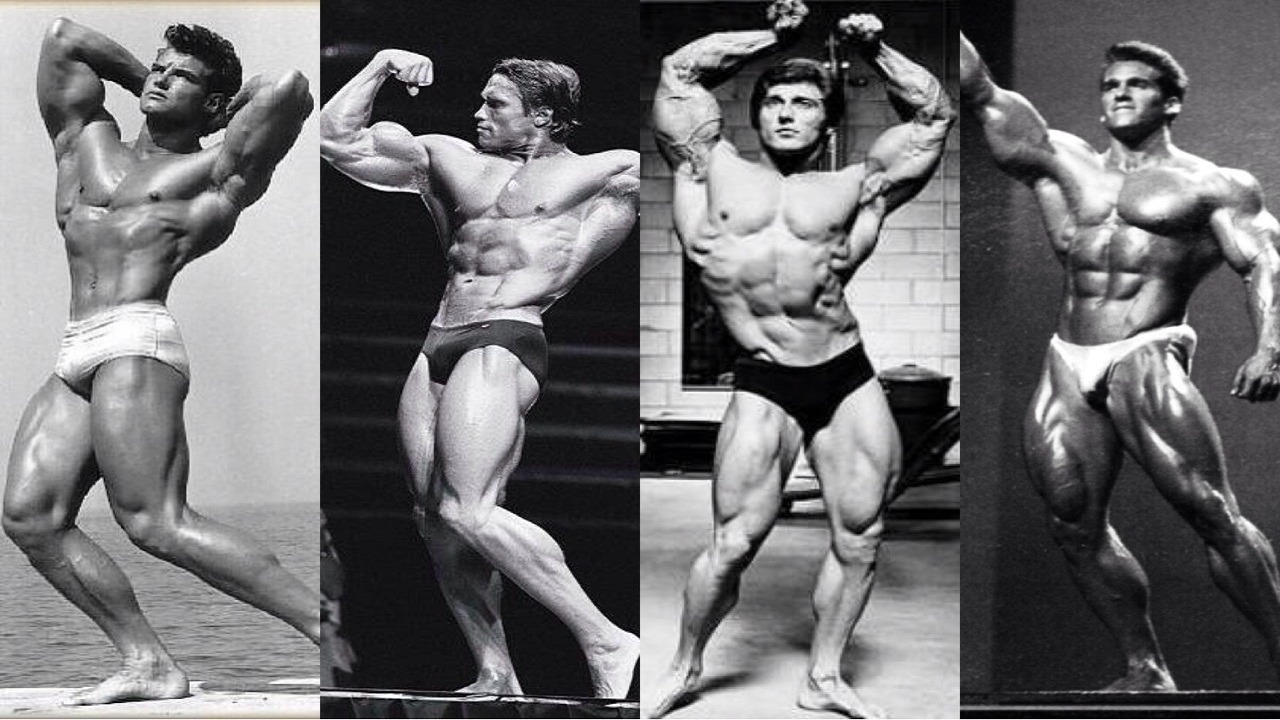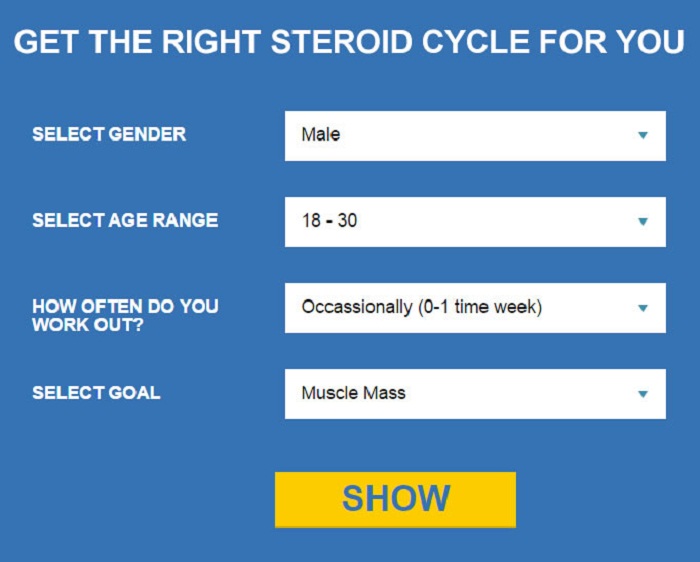Golden Era of Bodybuilding
Contents
- 1 Golden Era of Bodybuilding
- 2 Building the Classics: Forging Steel in the Iron Paradise
- 3 Pumping Up the Volume:
- 4 Feeling the Squeeze:
- 5 The Iron Will:
- 6 Fueling the Machine: Forget the Fancy Supplements
- 7 The Birth of Bro Science:
- 8 Real Food, Real Results:
- 9 The Legends of the Iron Paradise: When Bodybuilding Became Pop Culture
- 10 Arnold Schwarzenegger:
- 11 Frank Zane:
- 12 Sergio Oliva:
- 13 Lee Haney: The Master of Consistency
- 14 The Rise of the Gladiators: The Mr. Olympia Legacy
- 15 The Quest for Perfection:
- 16 A Star-Studded Stage:
- 17 Beyond the Competition:
- 18 The Golden Age and Beyond: A Legacy That Endures
- 19 A Shift in Focus, But the Core Remains:
- 20 The Golden Blueprint:
- 21 Inspiration for Generations:
- 22 A Legacy of Entertainment:
- 23 Conclusion: A Celebration of Iron, Aesthetics, and the Human Spirit
- 24 FAQs About the Golden Era of Bodybuilding
- 25 General Era and Philosophy
- 26 Training and Techniques
- 27 Legends and Competition
- 28 Legacy and Influence
- 29 References:
- 30
The Golden Era of Bodybuilding – ahh, a time that gets tossed around like a medicine ball in a hardcore gym. It wasn’t just about dudes with bulging muscles that looked like they could crush watermelons with their thighs (although there was plenty of that). It was a whole vibe, man. A time that laid the groundwork for the massive fitness industry we see today, launched iconic personalities into the stratosphere, and rewrote the rulebook on what the human body could achieve.
We’re talking about the 70s and 80s, a period where bodybuilding went from a niche hobby practiced by guys in wifebeaters to a full-blown mainstream phenomenon. Let’s take a deep dive into this glorious era, explore what made it tick, meet the larger-than-life characters who drove it, and see how it still casts a long shadow over the gym scene today.
Must Read: Old School Bodybuilding Secrets From The Iron Guru
Building the Classics: Forging Steel in the Iron Paradise
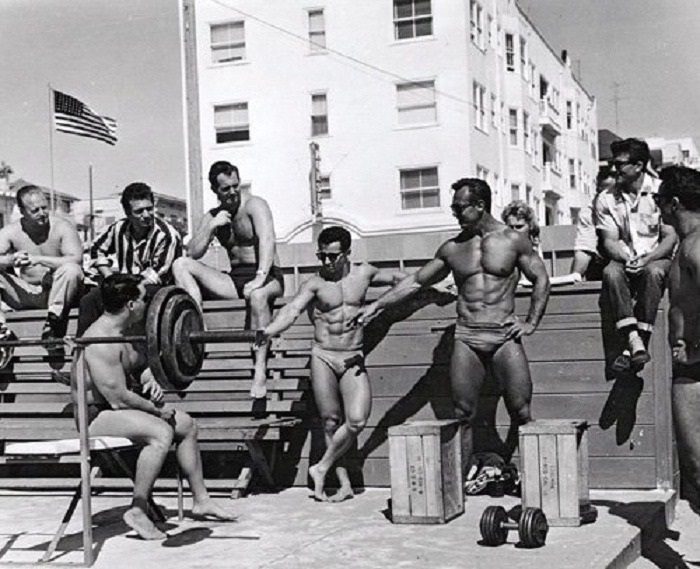
Forget fancy treadmills and contraptions that look like they belong on a spaceship. The Golden Age was all about raw intensity, pushing yourself to the limit, and building that mind-muscle connection that would make your biceps weep tears of joy (or maybe just scream in exhaustion).
Pumping Up the Volume:
Back then, they weren’t big on these split routines where you train different muscle groups each day. Nope, these guys were all about hitting each muscle group multiple times a week with exercises like squats, deadlifts, bench presses, and rows – the classics. But here’s the twist: they did them with high reps and short rest periods. Think Arnold Schwarzenegger – the king of this philosophy – who believed in maximizing muscle stimulation to get those gains.
Feeling the Squeeze:
It wasn’t just about lifting the heaviest weights. Golden Age icons were obsessed with that mind-muscle connection. They focused on the targeted muscle group during each exercise, making sure their form was on point and getting the most out of every contraction. Think Frank Zane, “The Chemist,” who wasn’t just after size, but also detail and definition – a physique that looked like it was sculpted by Michelangelo himself.
The Iron Will:
This era wasn’t just about building muscle; it was about building mental fortitude. These guys weren’t just training their bodies, they were forging their minds into steel. Remember Arnold’s legendary quote, “You can’t cheat genetics, but you can cheat on everything else”? That became the mantra. It was all about dedication, work ethic, and pushing yourself to places you never thought possible.
Fueling the Machine: Forget the Fancy Supplements
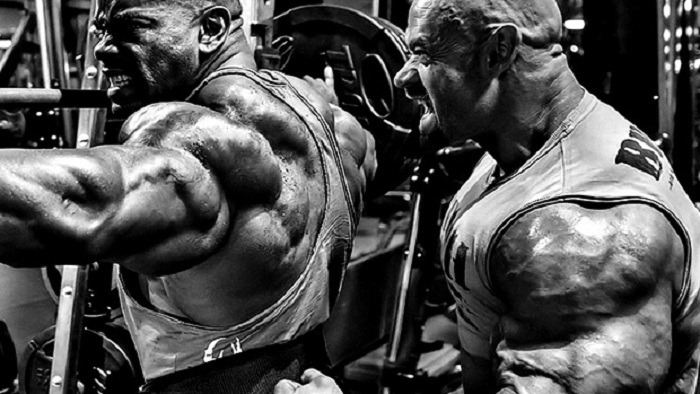
Protein shakes and pre-workout powders? Not a thing in the Golden Age. Back then, it was all about whole, unprocessed foods. Lean meats, fish, eggs, and dairy were the kings of the fridge, providing that all-important protein for muscle growth. Complex carbs like whole grains, potatoes, and rice kept them fueled for those brutal workouts, and healthy fats like nuts and avocados rounded out the diet.
The Birth of Bro Science:
While they didn’t have the fancy science we do today, these guys weren’t afraid to experiment. Concepts like “carb cycling” and “bulking and cutting” phases started to emerge, even if they were based more on trial and error than research papers. But hey, if it worked, it worked, right?
Real Food, Real Results:
Despite the lack of fancy supplements, Golden Age bodybuilders built some incredible physiques. This is a testament to the power of a clean, balanced diet based on whole foods. Forget the processed junk – these guys were onto something.
The Legends of the Iron Paradise: When Bodybuilding Became Pop Culture
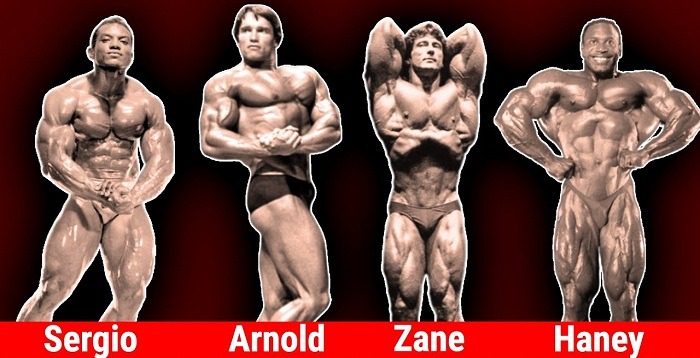
The Golden Age wouldn’t have been the same without the larger-than-life personalities who embodied its spirit. These guys weren’t just buff dudes; they were rockstars, bringing bodybuilding into the mainstream and inspiring a generation of iron-wielding disciples.
Arnold Schwarzenegger:
The name is synonymous with bodybuilding. Arnold’s influence transcended the sport. His charisma, dedication to training, and iconic movie roles like “Pumping Iron” and “Conan the Barbarian” made him a global icon and a major reason bodybuilding exploded in popularity.
Frank Zane:
Nicknamed “The Chemist” for his meticulous approach, Frank Zane was all about aesthetics and proportion. Forget the biggest muscles win mentality; Frank was all about detailed muscle definition and a symmetrical physique that looked like a work of art.
Sergio Oliva:
“The Myth” himself. Sergio Oliva was known for his incredible waist-to-shoulder ratio and his signature pose, the “vacuum.” His reign as Mr. Olympia from 1967 to 1969 cemented his place as a Golden Age legend.
Lee Haney: The Master of Consistency
Lee Haney wasn’t about flash; he was about pure dedication and results. With a record-breaking eight Mr. Olympia wins (consecutive, no less!), Lee embodied the kind of consistency and work ethic that separated the greats from the good. Known for his balanced physique, incredible conditioning, and signature pose (the “Haney pose”), he proved that bodybuilding wasn’t just about raw size, but about sculpting a masterpiece.
The Rise of the Gladiators: The Mr. Olympia Legacy
The Mr. Olympia competition was the ultimate proving ground in the Golden Age. Founded in 1965 by Joe Weider, it quickly became the Super Bowl of bodybuilding, attracting the best of the best and showcasing physiques that pushed the boundaries of human potential.
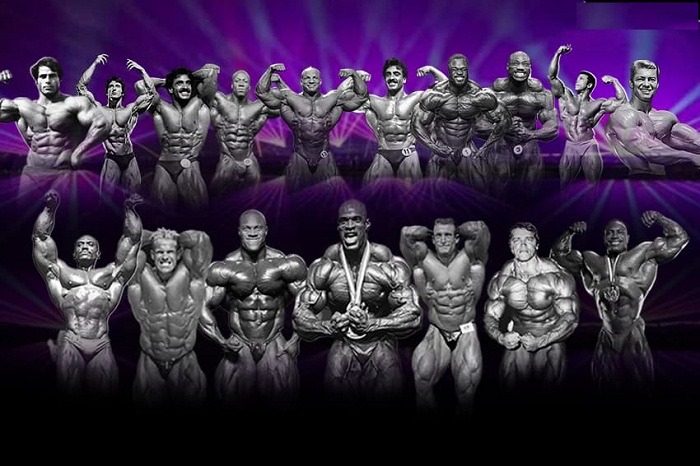
The Quest for Perfection:
Forget just being big. Mr. Olympia’s judging was all about a harmonious blend of factors: muscle size, symmetry, definition, and that all-important stage presence. Competitors weren’t just bodybuilders; they were performers, captivating audiences with their perfectly sculpted physiques and captivating routines that oozed confidence.
A Star-Studded Stage:
The Mr. Olympia stage was where legends were born. Champions like Arnold Schwarzenegger, Franco Columbu (Arnold’s training partner and close friend), Frank Zane, Lee Haney, and even Ronnie Coleman (whose career overlapped slightly into the early 90s) battled it out for bodybuilding supremacy. These guys weren’t just competitors; they were rivals who pushed each other to new heights, inspiring aspiring bodybuilders around the globe.
Beyond the Competition:
The Mr. Olympia’s impact went way beyond the trophies. It was a platform for promoting bodybuilding, attracting sponsorships, and showcasing the physiques of the era’s most iconic figures. These weren’t just muscle-bound dudes; they were celebrities, their captivating personalities and legendary physiques helping to propel bodybuilding into the mainstream consciousness.
The Golden Age and Beyond: A Legacy That Endures
The Golden Age may have ended, but its influence continues to ripple through the gym scene today. Let’s see how this era’s legacy lives on:
A Shift in Focus, But the Core Remains:
The sport has seen a shift towards even greater muscle mass. Modern bodybuilders often push the envelope beyond what their Golden Age counterparts achieved. However, the core principles – dedication, hard work, and a focus on aesthetics – remain central to bodybuilding success.
The Golden Blueprint:
Look around any gym today, and you’ll see echoes of the Golden Age training philosophies. Many modern programs incorporate elements like high-volume workouts, progressive overload (gradually increasing weight or difficulty), and that all-important mind-muscle connection. These principles, established back in the day, are still the building blocks for sculpting a killer physique.
Inspiration for Generations:
The iconic figures of the Golden Age are like the Mount Rushmore of bodybuilding. Their dedication, work ethic and commitment to their craft continue to motivate aspiring bodybuilders today. They’re a constant reminder that with hard work and the right approach, anyone can achieve incredible things.
A Legacy of Entertainment:
The Golden Age wasn’t just about barbells and sweat. It left a lasting mark on pop culture. Movies like “Pumping Iron” gave audiences a glimpse into the world of competitive bodybuilding, while documentaries like “The King” chronicled the life of Arnold Schwarzenegger, the era’s most iconic figure. These films continue to entertain and inspire new generations of fitness enthusiasts, showing them the dedication and passion that goes into building a world-class physique.
Conclusion: A Celebration of Iron, Aesthetics, and the Human Spirit
The Golden Age of Bodybuilding wasn’t just about bulging biceps and shredded abs. It was a celebration of human potential, pushing the boundaries of what the body could achieve. It was a time of iconic figures, groundbreaking training philosophies, and a raw, almost gladiatorial approach to competition. While the era may have ended, its legacy continues to inspire and influence the world of fitness today. So, the next time you hit the gym and push yourself to the limit, remember the spirit of the Golden Age. Remember the dedication, the iron will, and the unwavering pursuit of aesthetics. After all, that’s what this whole thing is about, right? Building a better you, one rep at a time.
FAQs About the Golden Era of Bodybuilding
General Era and Philosophy
What was the Golden Era of Bodybuilding?
The Golden Era of Bodybuilding is generally referred to as the 1970s and 1980s. This era saw bodybuilding explode in popularity and witnessed the rise of iconic figures who shaped the sport.
What are the core principles of Golden Era training?
Dedication, hard work, and a focus on aesthetics were central. Training philosophies included high-volume workouts with minimal rest, mind-muscle connection for targeted muscle development, and strong mental fortitude.
How did Golden Era bodybuilders approach nutrition compared to today?
Supplements were limited. The focus was on whole, unprocessed foods for protein (lean meats, fish, eggs, dairy), complex carbohydrates for energy (whole grains, potatoes, rice), and healthy fats (nuts, avocados).
Training and Techniques
What was the difference between Golden Era training and modern bodybuilding routines?
Golden Era routines often involved hitting each muscle group multiple times a week with high reps and short rest periods. Today’s routines might utilize split routines focusing on specific muscle groups with longer rest periods.
What is the concept of “mind-muscle connection” and how was it emphasized?
Mind-muscle connection refers to focusing on the targeted muscle during each exercise, ensuring proper form and maximizing contraction for better definition. Golden Era bodybuilders heavily emphasized this for detail and aesthetics.
What’s the story behind the famous “Iron Game Mentality”?
The “Iron Game Mentality” refers to the dedication and perseverance required for bodybuilding success. It wasn’t just physical training; it was building mental fortitude to push through challenges and achieve goals.
Legends and Competition
Who are some of the most iconic bodybuilders from the Golden Era?
Arnold Schwarzenegger, Frank Zane, Sergio Oliva, and Lee Haney are just a few of the legendary figures who shaped the sport during this era.
What was the significance of the Mr. Olympia competition?
Founded in 1965, the Mr. Olympia became the pinnacle achievement in bodybuilding. It showcased physiques, promoted the sport, attracted sponsorships, and witnessed legendary battles between iconic competitors.
What criteria were used for judging in the Mr. Olympia competition?
Judges evaluated a combination of factors: muscle size, symmetry, definition, and stage presence. Competitors showcased their physiques through mandatory poses and freestyle routines, captivating audiences with their physiques and performance.
Legacy and Influence
How has the Golden Era influenced modern bodybuilding?
While modern physiques tend to be larger, core principles like dedication, hard work, and aesthetics remain central. Many modern programs still incorporate elements of Golden Era training philosophies.
In what ways do Golden Era bodybuilders continue to inspire today?
Their dedication, work ethic and commitment to their craft serve as a constant reminder of what can be achieved with hard work and the right approach.
How did the Golden Era leave a mark on pop culture beyond bodybuilding?
Movies like “Pumping Iron” gave audiences a glimpse into the world of competitive bodybuilding, while documentaries like “The King” chronicled the lives of iconic figures. These films continue to inspire new generations.
What is the lasting legacy of the Golden Era of Bodybuilding?
The Golden Era celebrated human potential, pushed the boundaries of physique development, and established a foundation for the modern fitness industry. It left a legacy of iconic figures, groundbreaking philosophies, and a dedication to aesthetics that continues to inspire today.
References:
- Bodybuilding (https://en.wikipedia.org/wiki/Bodybuilding)
- Mr. Olympia (https://en.wikipedia.org/wiki/Mr._Olympia)
- Arnold Schwarzenegger (https://m.youtube.com/watch?v=cPNazmU4OMg)
- Pumping Iron (1977 film) (https://www.imdb.com/title/tt0076578/)
- The King (2017 documentary) (https://www.imdb.com/title/tt6775942/)
